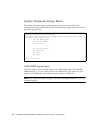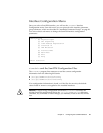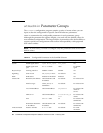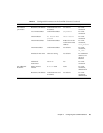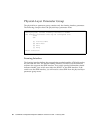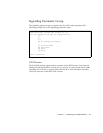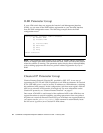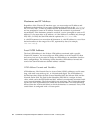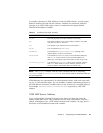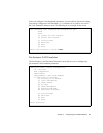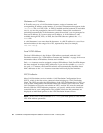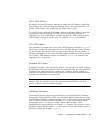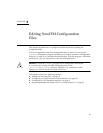
34 SunATM 3U CompactPCI Adapter Installation and User’s Guide • February 2001
Hostname and IP Address
Regardless of the Classical IP interface type, you must assign an IP address and
hostname to the interface. If you enter a hostname that appears in the /etc/hosts
file, or if NIS, NIS+, or DNS is enabled and the hostname is resolvable over it, you
are not prompted to enter an IP address. Instead, the resolution is performed
automatically. If the hostname cannot be resolved, you are prompted to enter an IP
address. If you must enter an IP address, or if the address is available only through
NIS, NIS+, or DNS, the SunATM software updates the /etc/hosts file.
A valid IP hostname is no more than 80 characters. A valid IP address is a set of four
decimal numbers in the range of 0 to 255, separated by dots (for example,
149.144.130.9).
Local ATM Address
The local ATM address is the 20-byte ATM address associated with a specific
Classical IP instance. You must assign an ATM address to each Classical IP client
and server, but you do not need to assign an ATM address on standalone (back-to-
back) configurations. The following section describes ATM address formats and
some of the SunATM software defined address variables.
ATM Address Formats and Variables
ATM addresses, like Network Service Access Point (NSAP) addresses, are 20 octets
long, with each octet made up of 1 or 2 hexadecimal digits. The ATM address is
divided into three fields: the End System Identifier field, the Selector field, and the
Network Prefix field. The End System Identifier (ESI) field is a unique six-octet
value, which can be the IEEE hardware MAC address conventionally associated with
every network interface. The Selector field is one octet long. The 13 octets that make
up the rest of the ATM address are called the Network Prefix. This field should be
derived from the ATM switch fabric to which the interface is connected. Every ATM
switch fabric is configured with a 13-octet prefix.



